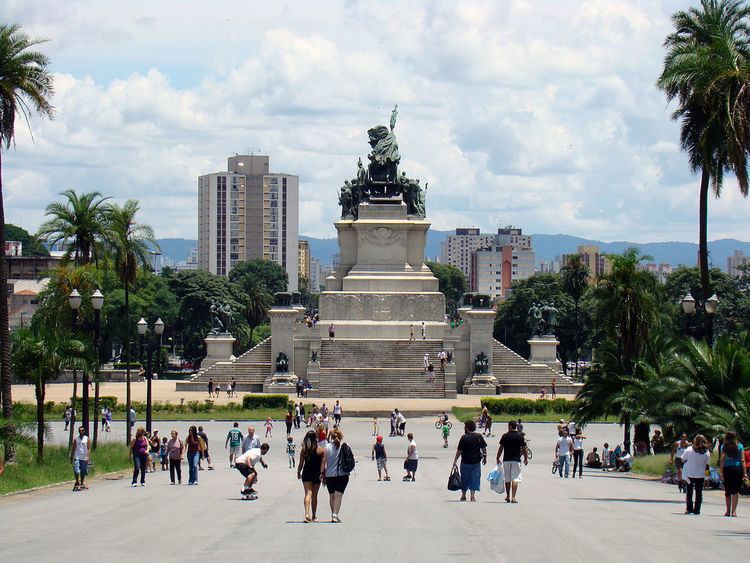Founded 1922 (1922) Governing body City of São Paulo | Established 1952 Phone +55 11 2068-0032 | |
 | ||
Built 1884 (1884) – 1926 (1926) Address Praça do Monumento, s/nº - Ipiranga, São Paulo - SP, 04261-050, Brazil Burials Pedro I of Brazil, Maria Leopoldina of Austria, Amélie of Leuchtenberg, Joaquim Gonçalves Ledo, Diogo Antônio Feijó Similar Casa do Grito, Parque da Independência, Museu Paulista, Obelisk of São Paulo, Ipiranga Brook | ||
The Monument to the Independence of Brazil (Portuguese: Monumento à Independência do Brasil) also known as the Ipiranga Monument (Portuguese: Monumento do Ipiranga) or the Altar of the Fatherland (Portuguese: Altar da Pátria), is set in granite and bronze sculpture. It is located on the banks of the Ipiranga Brook, in São Paulo, on the historic site where the later Emperor Dom Pedro I of Brazil proclaimed the independence of the country on September 7, 1822.
The monument was designed and built by sculptor Ettore Ximenes and architect Manfredo Manfredi to celebrate the first centenary of Brazilian Independence.
Inside the monument is the Brazilian Imperial Crypt and Chapel. The crypt was built in 1972 to house the remains of Emperor Pedro I of Brazil, also King Pedro IV of Portugal, and his wives, Maria Leopoldina of Austria and Amélie of Leuchtenberg.
The crypt is consecrated as a Catholic Chapel, as demanded by the then head of the Brazilian Imperial Family, Prince Pedro Henrique of Orléans-Braganza, who only agreed to allow the transfer of the bodies of his ancestors to the Monument on condition that the place be consecrated as a Catholic place of burial, and that a Catholic Altar was present, where Masses could be offered for the repose of their souls.
D. Pedro I and D. Amelia's bodies were transferred from the Royal Pantheon of the House of Braganza, in Lisbon, while D. Maria Leopoldina was moved from the Convent of Santo Antônio in Rio de Janeiro.
